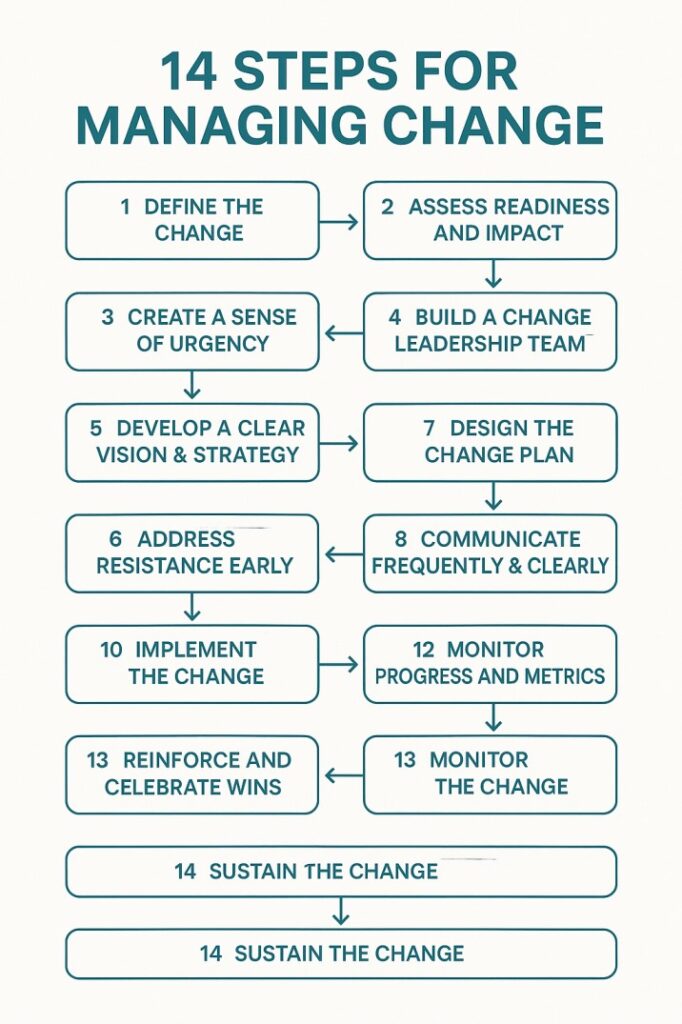| 1 | Define the Change | Clearly identify what the change is, why it is needed, and what success looks like. |
| 2 | Assess Readiness and Impact | Evaluate organizational readiness, capacity for change, and who will be affected. Conduct impact and stakeholder analyses. |
| 3 | Create a Sense of Urgency | Communicate why the change is critical now. Use data, risks, and opportunities to build momentum. |
| 4 | Build a Change Leadership Team | Form a coalition of sponsors, change agents, and influencers to drive the initiative. |
| 5 | Develop a Clear Vision & Strategy | Articulate a compelling future state and the roadmap to achieve it. Align it with business goals. |
| 6 | Engage Stakeholders | Identify stakeholders and involve them early. Understand and address their concerns. |
| 7 | Design the Change Plan | Prepare a structured change management plan: communication, training, resistance handling, and reinforcement. |
| 8 | Communicate Frequently & Clearly | Use multiple channels to consistently share updates, benefits, and expectations. Ensure two-way communication. |
| 9 | Empower & Equip People | Provide resources, training, systems, and authority to support new ways of working. |
| 10 | Address Resistance Early | Identify root causes of resistance. Use empathy, negotiation, and involvement to manage it constructively. |
| 11 | Implement the Change | Roll out the change incrementally or fully, depending on the strategy. Monitor adoption and feedback. |
| 12 | Monitor Progress and Metrics | Use KPIs and feedback to track performance and adaptation. Be ready to pivot. |
| 13 | Reinforce and Celebrate Wins | Acknowledge progress, reward success, and reinforce behaviors that support the change. |
| 14 | Sustain the Change | Institutionalize the change through updated policies, processes, leadership behavior, and culture embedding. |

